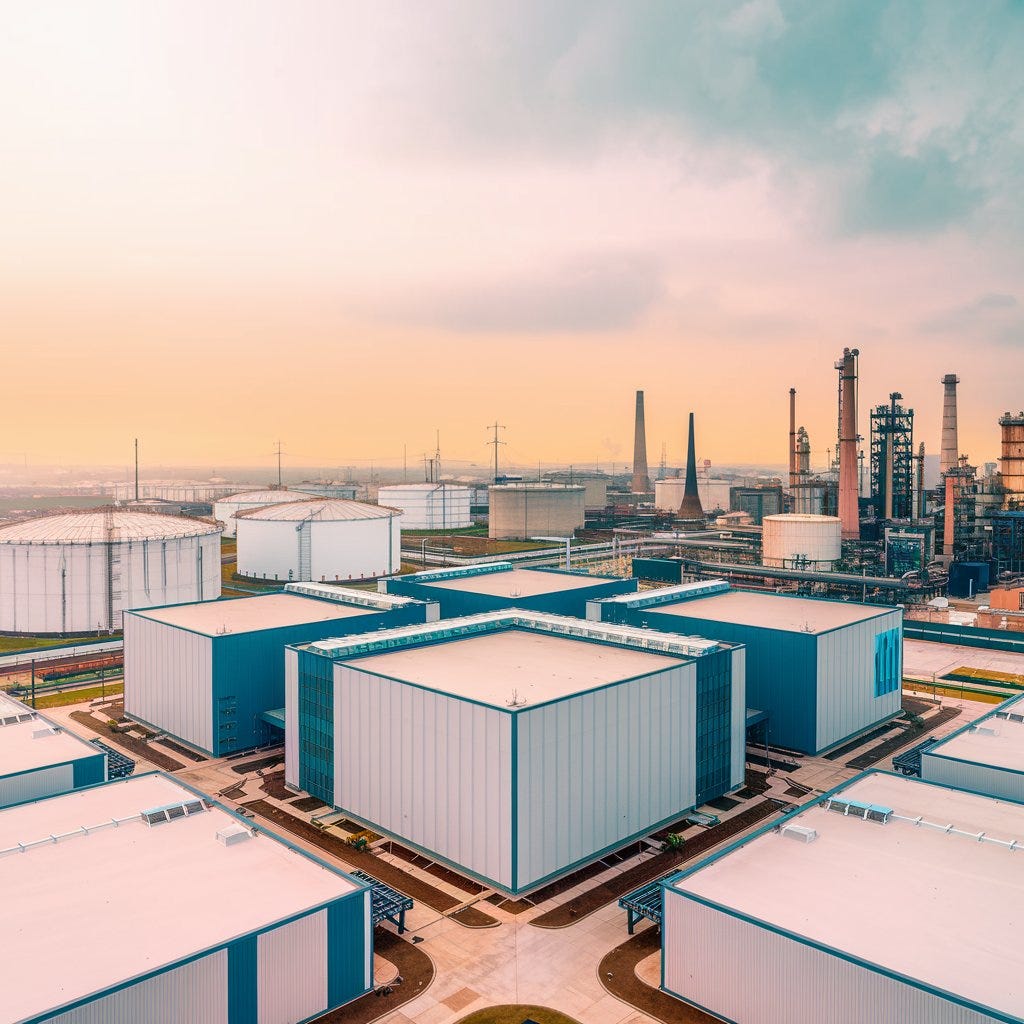AI, cloud computing, and digital services are expanding at an unprecedented rate.
But behind the scenes, there’s one challenge that few people are talking about.
Power.
No power, no data centers.
No data centers, no digital economy.
In many regions, especially in emerging markets, grid instability and energy shortages are major obstacles to digital expansion.
This is why natural gas is emerging as a critical tool for powering data centers and bridging the digital divide—not as a competitor to renewables, but as an essential bridge toward a more connected, AI-driven world.
The Energy Bottleneck in the Digital Economy
Data centers are one of the most power-intensive industries on the planet, and their energy demand is surging.
AI models require exponentially more compute power—ChatGPT-4 uses 10x more energy than its predecessor.
By 2030, global data center electricity consumption is expected to double.
Cloud expansion in emerging markets is lagging—not due to demand, but due to energy constraints.
In developed markets, hyperscalers are investing heavily in nuclear, wind, and solar. But in regions where grids are unstable or renewable energy isn’t yet sufficient, these solutions can’t provide the 24/7 reliability data centers need.
That’s where natural gas comes in.
By leveraging existing gas infrastructure, data centers can deploy faster, cheaper, and more reliably—creating a viable path to digital expansion in underserved regions.
1. Stable, Reliable Power for Always-On Infrastructure
Data centers require uninterrupted power. Even a brief outage can disrupt AI training, financial transactions, and mission-critical cloud services, leading to millions in losses.
Natural gas offers a stable, scalable energy source, reducing dependence on overstressed electrical grids that can’t always handle high-density computing loads.
In areas where renewables alone can’t yet guarantee 24/7 uptime, gas acts as a transitional solution, providing a consistent power baseline that allows AI and cloud computing to scale without constant grid disruptions.
2. Faster Deployment, Faster Digital Expansion
Speed is everything.
Building new power plants or expanding grids can take years, even decades. But many regions already have extensive natural gas pipelines, allowing gas-powered data centers to come online far faster than those relying on long-term grid upgrades.
For businesses and hyperscalers expanding in Africa, Southeast Asia, and Latin America, this means:
✅ Faster cloud adoption
✅ Less regulatory friction compared to new grid developments
✅ AI infrastructure where it’s needed, without waiting for power grid expansion
3. Cost Efficiency in Unstable Grid Markets
Electricity is one of the biggest cost drivers for data centers.
In regions where grids are unreliable or expensive, companies often rely on diesel backup generators, which are costly and environmentally damaging.
Gas-powered data centers, on the other hand, can operate more efficiently through technologies like combined heat and power (CHP) systems, which can reduce energy costs while improving overall efficiency.
For hyperscalers expanding into emerging markets, this cost advantage could translate into billions in operational savings over time.
4. Expanding Connectivity & Bridging the Digital Divide
Bringing AI, cloud computing, and digital infrastructure to underserved areas isn’t just an opportunity—it’s a necessity.
Natural gas makes it possible to build data centers in locations where traditional grid expansion isn’t happening fast enough. This unlocks:
Faster internet access for millions of people
Stronger cloud adoption in emerging economies
AI expansion beyond traditional tech hubs
Many rural and underserved communities lack stable power, making digital access unreliable or nonexistent. Gas-powered data centers offer a path forward, ensuring that entire regions aren’t left behind in the AI-driven economy.
The Future: A Hybrid Approach
Natural gas isn’t a replacement for renewables. It’s a necessary bridge to scaling digital infrastructure while transitioning to greener energy solutions.
As AI and cloud workloads continue to grow, power demand will outpace grid expansion in many parts of the world.
Hyperscalers and data center operators who recognize this early will have a significant first-mover advantage in high-growth markets where energy constraints have stalled cloud adoption.
The AI economy is being built right now.
Those who secure the infrastructure first will define the next decade of digital transformation.
Those who don’t?
They’ll be waiting—while others move first.


